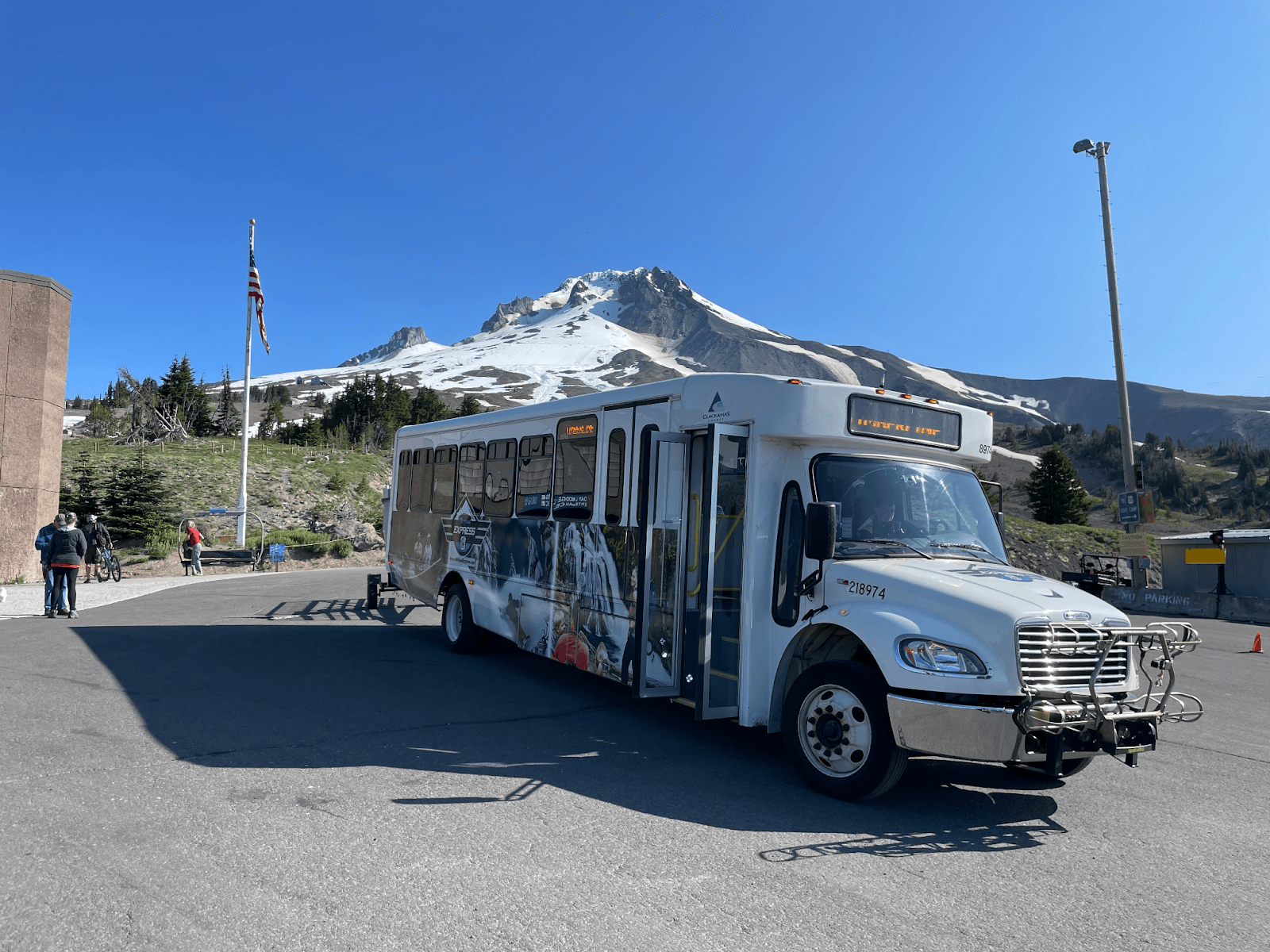
News
By Chris Rall, August 21, 2024
A recent backpacking trip using public transit shed light for this urban dweller on the value of rural transit service.
Last month, my partner joined me for a 4-day backpacking trip on the Pacific Crest Trail (PCT) in Northern Oregon. Unlike Switzerland where trains and ski lifts carry trekkers most anywhere, most backpacking trips in the U.S. involve driving a car to the trailhead. This trip was different. We left the car at home.

After a phenomenal four days and 50 miles, passing through semi-alpine environs and then down into spectacular Eagle Creek in the Columbia River Gorge, we arrived in Cascade Locks where the PCT crosses the Columbia River into Washington.


We had time to grab a meal in Cascade Locks before riding the Gorge Express back to Gateway Transit Center in Portland and taking a Trimet Light Rail and bus from there to home-sweet-home.
Had we tried to do this trip by car, we would have had to use two cars and spend hours “running shuttle” to position vehicles where we needed them at the start and end, plus pick a car back up after the hike. Public transit made it possible to hike from point-to-point instead of a loop, so that we could progress through the landscape as beautiful scenery unfolded before us.

Rural transit doing quadruple duty
There are other reasons to give transit access to outdoor recreation another look. As we explained in An Active Roadmap: Best Practices in Rural Mobility, the more than one million rural residents without access to a car might find access to public parks and recreation areas challenging, even when they live relatively close to these areas.
Public transit can be useful for enhancing access to outdoor recreation. I’ve seen many teenagers from Sandy riding the Mount Hood Express—the bus we used to get to Timberline Lodge—so they could go skiing without getting a ride from their parents. That same bus helps mountain bikers in the summer to get up higher on the mountain so they can enjoy more downhilling and less climbing. In central Oregon, Cascade East Transit’s Ride the River shuttle serves various tubers and stand-up paddle boarders enjoying the Deschutes River, carrying folks upstream so they can float down through the City of Bend, Oregon.
For some really popular outdoor destinations, public transit can help address parking and traffic problems and help transit riders avoid hassles. I’ve been on the Mount Hood Express on a bluebird winter powder day passing a line of cars blocked from proceeding because the Timberline parking lot was full. During our ride on the Gorge Express headed home from our backpacking trip, a couple got off the bus at Multnomah Falls with stickers from the bus driver allowing them to bypass the permitting system that regulates visitor parking, allowing them to quickly jump into their activities.
And not everyone using these transit services is there to play. Transit services that urban dwellers use to access outdoor recreation are also often really useful rural public transportation. Our bus to Timberline lodge carried restaurant workers to Government Camp and Timberline employees to the lodge. When we got off the Gorge Express at Gateway Transit Center in Portland, a few fellow passengers from Hood River were headed to the Portland airport.
Other examples of public transit enhancing access to outdoor recreation
Compared to developed European and Asian countries, folks traveling in the U.S. have to drive to outdoor recreation much more often. This can limit access to these public spaces and increase harmful transportation emissions caused by private vehicle use. However, there are some bright spots. The state of Colorado runs Snowstang (an outgrowth of its Bustang intercity bus program) that focuses on delivering skiers to the many ski resorts in the Centennial State. Ski resorts are in fact a big public transit opportunity, since so many people are all traveling to one place. Perhaps that’s why we see strong transit service to ski resorts in places like Oregon, Colorado, Utah and Wyoming.
Many national parks in every corner of North America have also invested in public transit access. In many places, this service is by bus, but it can also be a ferry or even, in the case of Yellowstone, a snowcoach. While a lot of transit service in national parks is aimed at visitors who park their cars near the entrance and use transit within the park, some national parks have transit service that can get you there from nearby cities. For example, you can take Amtrak to Merced, California to access Yosemite, and the Amtrak Empire Builder train trip to Glacier National Park in Montana is well-renowned.

We have a long way to go to be like Switzerland where trains serve almost every valley, and cog railways and ski lifts transport trekkers up the mountains. However, we can certainly do more to provide more transit to outdoor recreational opportunities, which would reap benefits for outdoor enthusiasts and rural communities alike.
Related News

© 2026 Smart Growth America. All rights reserved
Site By3Lane Marketing









